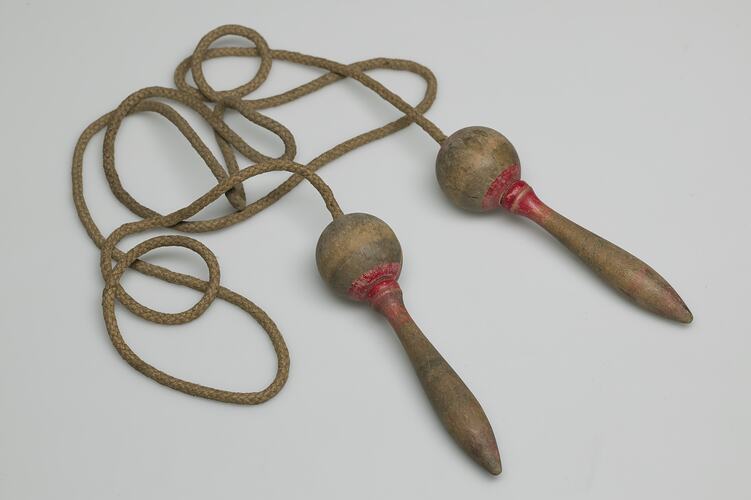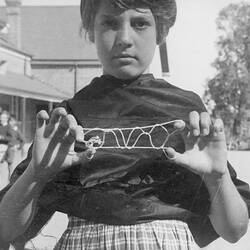Summary
Skipping rope which forms part of the Australian Children's Folklore Collection (ACFC).
The ACFC is unique in Australia, documenting contemporary children's folklore across Australia and in other countries reaching back to the 1870s. The Collection has a strong component of research material relating to Victoria.
This object was part of a group of items, originally from the National Trust of Australia, which arrived at the Museum with the ACFC.
The earliest written record of skipping comes from 6th century China. Skipping has been established as a children's game since the 7th century. In earlier centuries it was played by adults as well as children, and by males as well as females. Gradually it came to be regarded as a girls' game, and in the 1990s it is still played mainly by girls, although boys sometimes join in the game when it is in progress. In America, skipping is known as Jump Rope. The ropes can be any kind of suitable material - a length of rope, a plastic tube, even vines or hop-stems have been used, and the use of a loosely twisted duck net by Aboriginal people has been documented from the Lower Murray River. The game is usually accompanied by rhymes, which are chanted or sung to the rhythm of the rope.
Physical Description
Length of brown rope with wooden handle at each end. Handles consist of a slender stick for grasping, crowned by a round end which connects to the rope. Faded red stripes encircle the handles and there are faint traces of blue (?) stripes also.
More Information
-
Collection Names
-
Collecting Areas
-
Acquisition Information
Donation from National Trust of Australia (Victoria), 18 May 1999
-
Classification
-
Category
-
Discipline
-
Type of item
-
Overall Dimensions
840 mm (Length)
Overall dimension of the extended rope.
-
Other Dimensions
165 mm (Length), 42 mm (Outside Diameter)
Overall dimension of a single handle.
-
Keywords
Children's Folklore, Children's Play, Games, Making History - Australian Childrens Folklore




